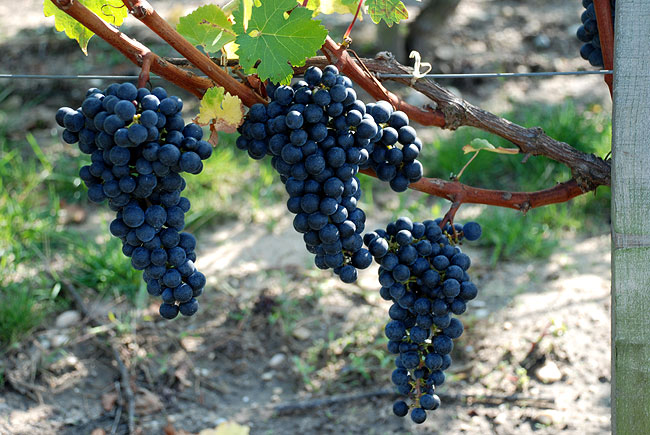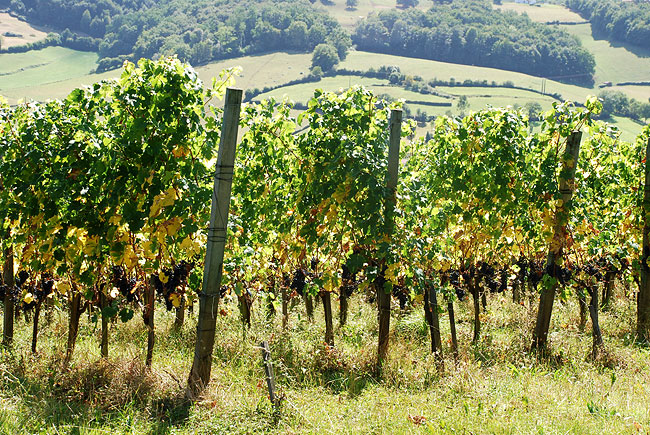Grappling with Grape Varieties
I am always surprised when people proclaim a passion for or an aversion to one particular grape variety. There can be so much bandwidth within a grape's different interpretations and incarnations that it seems odd to be able to declare a strong stance amidst such variety. And what of wines like Châteauneuf-du-Pape that can be comprised of multiple varieties blended together? Where do they fit in in this selective process?
I suppose what people are really alluding to is that they have a preference for certain styles of wine and, of course, grape selections do play a key role there. Matters are further confused by the fact that one's tastes and budgets can change over time so what you adore when you are 20 you might find unpleasant when you are 50 and vice versa.
Generalisations can have some validity though so I thought it might be interesting to note my thoughts and preferences regarding a diverse dozen of mainstream grapes and what it is that sets them apart.

Sauvignon Blanc:
This is a strange grape for me because I like tasting it and find it relatively easy to identify 'blind' but I hardly ever buy it or drink it. I enjoy cut grass, gooseberry and citrus zest scents and like quite racy, dry, oak-free wines but somehow find them de trop when confronted with a whole glass or bottle.
I suspect I'm not alone here and judging by Jancis Robinson's tasting note on the 2010 vintage of André Vatan's Sancerre 'Les Perriers' I think she might be in the same camp:
"Clay and limestone. Blend. Now this is really vibrant with quite a bit of struck-match character, then masses of sleek, satisfying fruit. And great persistence. This is the sort of wine that would, nay should, get me drinking Sancerre again. In fact I may even have fallen in love with its shiny pale green foils. Very complete. Lip smacking! 17.5/20."
An interesting piece of trivia is that the first case of wine that Jancis bought for herself was a Sancerre – Gitton 'Monts Damnés' 1973.
Chardonnay:
Chardonnay and I have a weird 'on and off' interrelationship that shows no sign of abating. My early days in the wine trade, in the 1990s, saw a boom in big, blockbuster, full-throttle, oaky Australian Chardonnays and I loved them for their impact and lack of subtlety. A decade or so later they had become passé and the wine world was demanding wines with more finesse and complexity. I then discovered aspirational 'Old World' Chardonnays, which is probably the wrong way round, but there was much to learn and enjoy. Today it is getting jolly difficult to tell where a wine has been made as there is so much cultural, geographical and technical crossover. Still, it is anything but boring and I'm heartened that one grape can produce so many different styles of wine in so many places.
Viognier:
Viognier is undoubtedly one of my preferred grapes, I love those alluring honeysuckle scents and white stone fruit flavours, but I'm pretty particular about the terroir it is grown on and the style of the wine making. I have a strong preference for Condrieu, which I can ill afford, but some of the IGP bottlings from top growers can have great charm at prices that aren't unreasonable.
Chenin Blanc:
Chenin Blanc is a marvellous and incredibly versatile grape that for baffling reasons remains commercially, if not critically, underrated. The Loire valley and South Africa remain the hotspots for a broad range of beautiful wines that are deserving of a much wider audience. Oh for a glass of a nervy young Vouvray or sensuous Savennières.
Riesling:
Loved by the press, the denizens of Germany and a handful of aficionados but largely overlooked by our domestic wine consuming populace, Riesling is a grape that has many facets and multiple charms. I have a particular penchant for youthful, dry, mineral-edged examples from Alsace, Saar and Mosel.
Vermentino:
Also known as 'Rolle'. Vermentino is a grape that flourishes on the sunny and sandy soils of Provence and Corsica yielding expressive aromatic wines that are ideal for al fresco summer drinking with or without fresh seafood as an accompaniment. Domaine de Torraccia's white wine is a pure, organic version with alluring citrus scents and a delicate dry palate – understated perfection.
Pinot Noir:
It took me over 20 years in the wine trade to learn that Pinot Noir is a grape I adore. My problem was that I aimed too low for too long. My revelatory moment came when my friend Adam Brett-Smith, the MD of Corney & Barrow, generously sent over a glass of Clos du Tart 2003 when I was lunching at Morton's in Berkeley Square. My palate has been corrupted ever since – if only I could enjoy such wines more often.
Syrah:
The predominant grape of the Northern Rhône is one that I like very much and fortunately sample quite frequently. Although I adore Hermitage and Côte-Rôtie they are a bit aspirational for every day drinking so I tend to buy more Saint-Joseph and Crozes-Hermitage which are considerably more accessible. The Graillot family are good friends of ours and great wine makers. Their forward drinking 'Equinoxe' bottling of Crozes-Hermitage makes a great introduction to their oeuvre.

Cabernet Sauvignon:
A strange constant for someone raised on wines from the Rhône and Loire. As an A-level student cramming at a college in Oxford I drank Bulgarian Cabernet Sauvignon with Barbara my landlady because it was quite potable and good value. I think it was from a state controlled winery. Anyway, we developed a surprising tolerance for it. Today I enjoy it as a component of Bordeaux, Domaine de Trévallon and elegant Australian bottlings such as Forest Hill and Jasper Hill. It is difficult to describe exactly what I like about it but it is something to do with ripe, briary fruit interacting with a tannic sub-structure that really appeals.
Cabernet Franc:
Brought from Bordeaux to Touraine by Cardinal Richelieu's steward Abbé Breton in 1631 Cabernet Franc is a great grape variety that really should attract more attention. What it does with aplomb is produce wonderful 'cool climate' red wines that have a wealth of summer berry scents and flavours offset by a fresh acidity. They are terrific lightly chilled and are often great value for money.
Gamay:
Gamay is a grape that has been in and out of fashion with such regularity it could be forgiven for having an identity crisis. Happily, at the time of writing it is de rigeur and deservedly so. After being in the doldrums due to over production of inferior wines Beaujolais is bouncing back as a new generation of talented, young wine makers are producing some superb wines from mature rootstock. They drink well on their youthful fruit and can cellar well for up to a decade.
Grenache Noir:
Grenache is the base grape, the foundation if you like, of Châteauneuf-du-Pape and Gigondas and I love the way it melds harmoniously with other grapes and ages so gracefully. There are some very good unblended examples too – Carsten Migliarina's bottling from Wellington on the Western Cape of South Africa is terrific.








